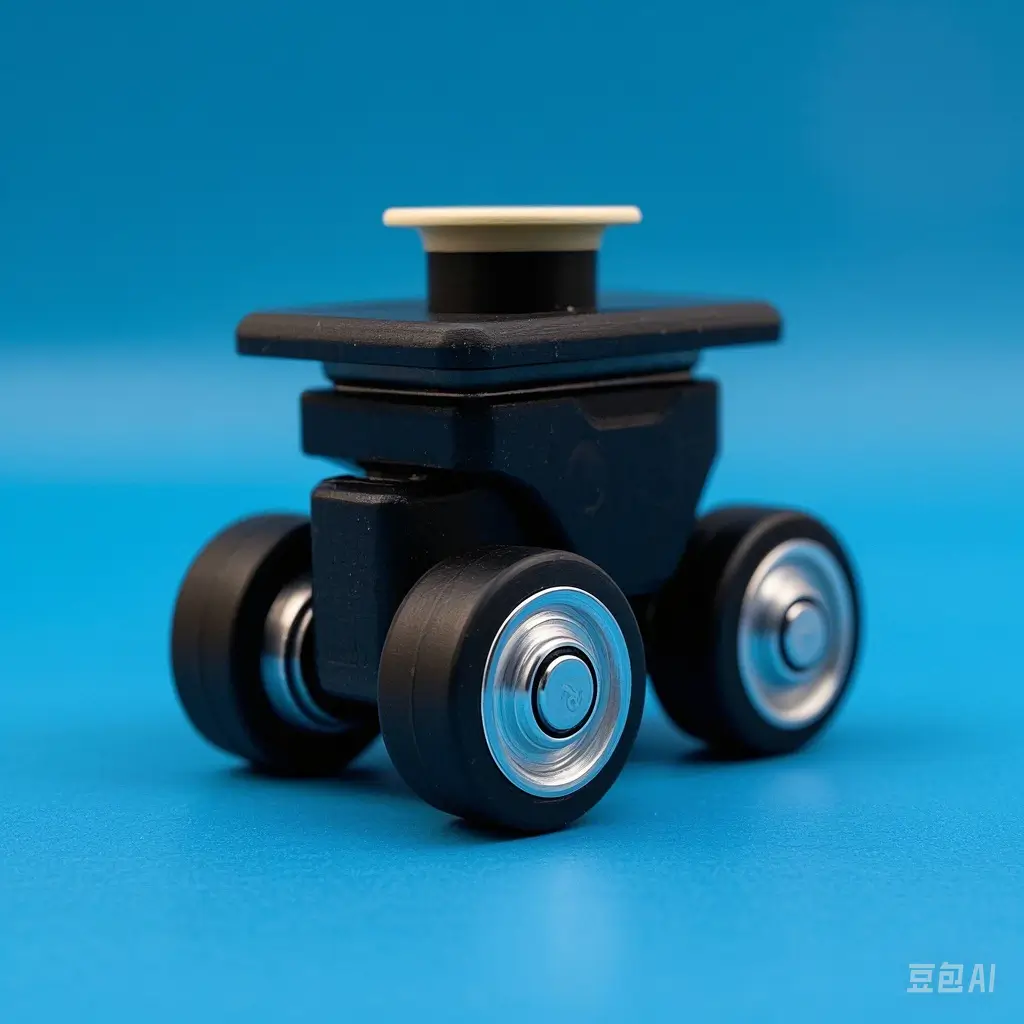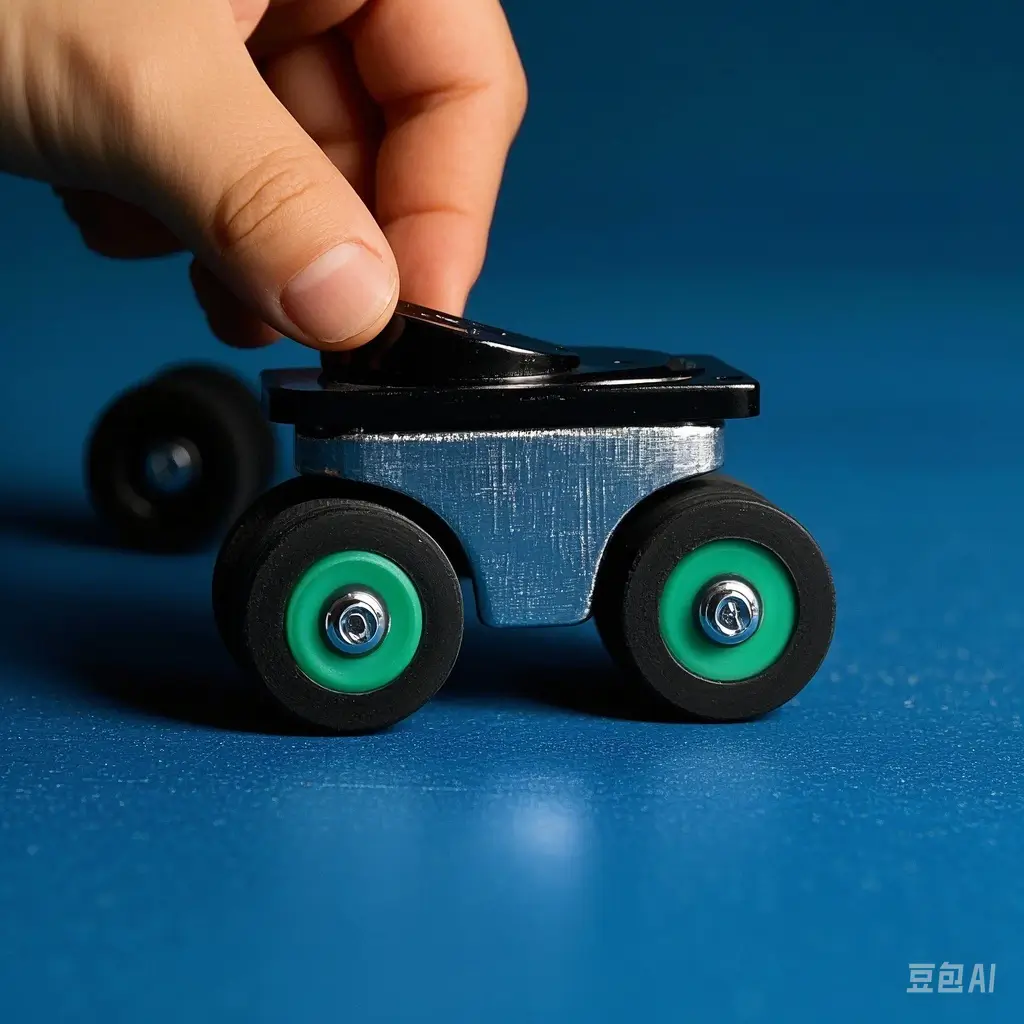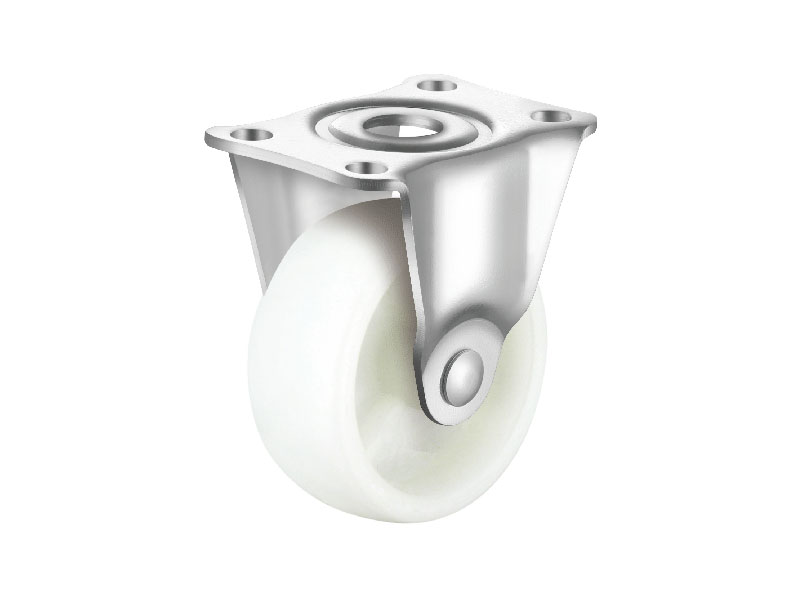The Quiet Magic of Tiny Caster Wheels: How Polyurethane Treads and Dual-Wheel Steering Keep Things Silent
Introduction of Tiny Caster Wheels
Have you ever pushed a cart, chair, or even a hospital bed and been annoyed by loud, squeaky wheels? Tiny caster wheels are here to solve that problem! These small but mighty wheels are designed to move smoothly and quietly, making them perfect for hospitals, offices, schools, and even your home. But how do they work? What makes them so silent? In this article, we’ll explore the science and engineering behind these quiet heroes—from special rubbery materials like polyurethane to clever designs like dual-wheel steering. Whether you’re a student working on a science project or just curious about how things work, let’s dive into the fascinating world of tiny caster wheels!

Tiny Caster Wheels
More about tiny caster wheels
Key Features and Benefits
-
Compact Size: Tiny caster wheels are typically small in diameter, often ranging from 2 inches to 3 inches, making them suitable for tight spaces.
-
Lightweight: These wheels are often lightweight, which makes them easy to install and use on various small items.
-
Material Options: Common materials include polyurethane, phenolic, rubber, and thermoplastic rubber (TPR). These materials offer different benefits such as floor protection, durability, and noise reduction.
-
Load Capacity: Despite their small size, tiny caster wheels can support significant weight. For example, some 3-inch wheels can handle up to 150 kg to 300 kg.
-
Locking Mechanisms: Many tiny caster wheels come with locking brakes to prevent movement when needed, ensuring stability.
What Makes Caster Wheels Silent?
The Power of Tiny Caster Wheels
Imagine walking barefoot on a soft rubber mat instead of a hard, cold floor. That’s exactly what polyurethane does for caster wheels! Polyurethane is a stretchy, durable material that’s great at absorbing bumps and vibrations. Here’s why it’s the secret ingredient for silent wheels:
Noise Absorption
When a wheel rolls over a surface, it creates vibrations. Hard materials like plastic or metal amplify these vibrations, turning them into noise. Polyurethane, however, acts like a sponge for sound. It soaks up the vibrations instead of letting them escape as annoying squeaks or rattles.
Grip and Smoothness of Tiny Caster Wheels
The tread—the part of the wheel that touches the ground—is designed with tiny patterns or grooves. These patterns help the wheel grip the floor gently, reducing slipping and squeaking. Think of it like the tread on your sneakers: it keeps you from sliding but doesn’t make noise when you walk.
Long-Lasting Quiet
Unlike hard plastics that crack over time, polyurethane stays flexible and durable. This means the wheels stay quiet for years, even with heavy use. Hospitals, for example, rely on polyurethane wheels because they can’t afford noisy equipment disturbing patients.
Fun Fact: Polyurethane isn’t just for wheels! It’s also used in shoe soles, skateboard wheels, and even phone cases because of its shock-absorbing powers.
Dual-Wheel Steering: The Secret to Smooth Moves
What Is Dual-Wheel Steering?
Most wheels turn in one direction, like the wheels on a car. But tiny caster wheels with dual-wheel steering have two small wheels placed side by side. This setup allows them to spin freely in any direction without getting stuck. Imagine a shopping cart that can glide around tight corners effortlessly—that’s the magic of dual-wheel steering!
Why Dual-Wheel Systems Work Better
Tiny Caster Wheels Are Less Friction, Less Noise
With two wheels sharing the load, there’s less pressure on each wheel. Less pressure means less grinding against the floor, which reduces noise. It’s like having two friends help you carry a heavy box instead of one—everyone stays relaxed and quiet!
360-Degree Freedom
Traditional single wheels can get stuck if they hit a crack or bump. Dual-wheel systems, however, pivot smoothly in any direction. This makes them perfect for tight spaces like hospital hallways or crowded classrooms.
Perfect Balance
The dual-wheel design spreads weight evenly, preventing wobbles and uneven wear. This balance keeps the wheels rolling straight and silent, even on uneven floors.
Try This at Home: Grab two toy car wheels and attach them side by side to a small block (use glue or tape). Push the block around your desk and notice how smoothly it moves compared to a single wheel. You’ve just created a mini dual-wheel caster!
Real-Life Uses of Quiet Caster Wheels
Hospitals: Where Silence Saves Lives
In hospitals, noise isn’t just annoying—it can slow down healing. Tiny caster wheels play a huge role in keeping things peaceful:
Medical Carts
Nurses use carts to deliver medicines, tools, and meals. Quiet wheels let them move quickly without waking patients or disrupting rest.
Wheelchairs and Stretchers
Polyurethane wheels on wheelchairs absorb shocks from bumpy floors, making rides smoother and quieter for patients.
Libraries and Schools: Focus-Friendly Spaces
Loud wheels can ruin concentration in libraries or classrooms. Here’s how tiny caster wheels help:
Library Book Trucks
Librarians glide through aisles silently, thanks to polyurethane treads that grip wooden floors without squeaking.
Classroom Furniture
Chairs and desks with quiet wheels let students rearrange seating for group work without distracting screeches.
Offices and Homes: Everyday Quiet
From printers to kitchen carts, quiet wheels make daily life easier:
Office Equipment
Printers, filing cabinets, and tool carts roll smoothly across carpets and tiles, reducing workplace noise.
Home Appliances
Ever tried moving a heavy vacuum cleaner? Quiet wheels make cleaning less of a noisy chore.
Keyword Spotlight: Silent caster wheels, hospital equipment wheels, noiseless office carts
How to Choose the Best Quiet Caster Wheels
Key Features to Look For
Material Matters
Always choose wheels made with soft, flexible materials like polyurethane or rubber. Avoid hard plastics or metals—they’re noisy and less durable.
Steering Type
Dual-wheel systems are ideal for tight spaces and quiet movement. Single wheels work for simple tasks but may struggle with sharp turns.
Size and Load Capacity
Match the wheel size to your needs:
- Small Wheels (2–5 inches): Perfect for light items like chairs or small carts.
- Large Wheels (6–8 inches): Handle heavy loads like industrial equipment or hospital beds.
Pro Tip: Test wheels on different surfaces! Roll them on tiles, carpets, and wood to see how they perform.
Common Mistakes to Avoid
Ignoring Floor Types
A wheel that works on carpet might screech on tiles. Check if the tread pattern suits your floor.
Overloading Wheels
Even the quietest wheels will groan if they’re carrying too much weight. Always check the load capacity label.
Long-Tail Keywords: Best quiet wheels for heavy carts, how to reduce caster noise, soft rubber wheels for hardwood floors
Fun Experiments and DIY Projects
Experiment 1: Make Your Own Quiet Wheel
What You’ll Need
- A plastic bottle cap
- A thick rubber band (to mimic polyurethane)
- A pencil or stick for the axle
Steps
- Wrap the rubber band tightly around the bottle cap to create a tread.
- Push the pencil through the cap’s center to make an axle.
- Roll your DIY wheel on a table and listen! Compare it to a bare cap—the rubber should reduce noise dramatically.
Science Connection: This shows how soft materials absorb vibrations, just like real polyurethane wheels.
Experiment 2: Friction and Noise
What You’ll Need
- Two identical toy cars
- A small piece of sandpaper
- A smooth floor
Steps
- Leave one car’s wheels bare.
- Glue sandpaper to the wheels of the second car.
- Roll both cars on the floor. Which one is louder?
Conclusion: Rough surfaces (like sandpaper) create more friction and noise, just like hard wheels.
The Science Behind the Silence
Why Noise Happens
Sound is created when objects vibrate. Hard wheels vibrate loudly against floors, while soft materials like polyurethane absorb those vibrations.
Vibration Absorption
Polyurethane’s molecular structure acts like a net, trapping vibrations before they turn into sound waves.
Friction Reduction
Dual-wheel systems spread weight evenly, reducing the friction between wheels and floors. Less friction means quieter movement.
Cool Vocabulary to Know
- Vibration: Rapid back-and-forth movements that create sound.
- Friction: The resistance when two surfaces rub against each other.
- Load Capacity: The maximum weight a wheel can safely carry.
Activity: Rub your hands together quickly. Feel the heat? That’s friction! Now add lotion and rub again—less heat, less noise. This is how polyurethane works!
Conclusion: Why Tiny Caster Wheels Are a Big Deal
From hospitals to classrooms, tiny caster wheels make our world quieter and more efficient. Thanks to smart materials like polyurethane and clever designs like dual-wheel steering, these wheels solve everyday problems without a single squeak. Next time you see a cart, chair, or medical bed gliding silently by, you’ll know the science and engineering behind the magic!






